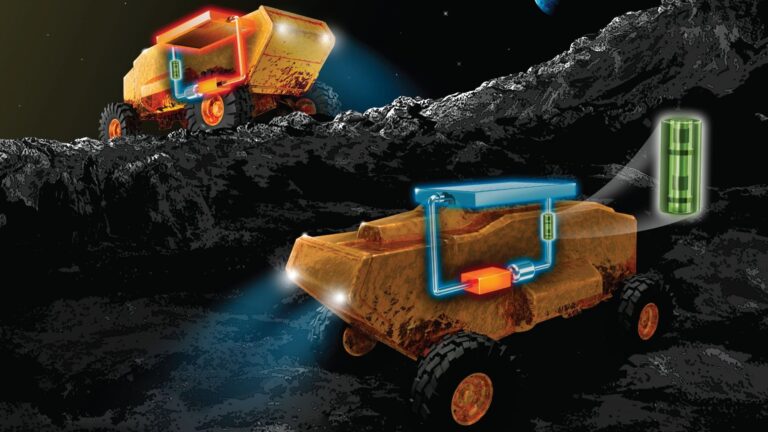With temperatures reaching 260 degrees Fahrenheit by day, followed by weeks of temperatures dropping to minus 280 degrees Fahrenheit at night, lunar rovers like Japan’s SLIM are limited by the harshness of the environment. But if humanity aims to establish a permanent settlement on the moon, astronauts will need more adaptable gear for longer periods of time, and researchers are developing innovative solutions to help tools like lunar rovers get the job done.
Existing lunar rover insulation systems typically use expensive heaters or inefficient passive valves attached to loop heat pipes (LHPs) to regulate temperature. To solve this problem, an engineering team from Nagoya University recently collaborated with the Japan Aerospace Exploration Agency (JAXA) to design an intermediate heat switch device that switches between cooling and heating the lunar rover’s onboard electronics. The prototype, detailed in the journal Nature, Applied Thermal Engineeringcombines LHP and electrohydrodynamic (EHD) pumps to create a highly efficient, low power device. It’s equal parts refrigerator and laptop cooling system..
[Related: Wild NASA proposal envisions magnetic hover trains on the moon.]
Masato Nishikawahara, co-author and principal investigator of the paper, called such thermal switching technology “essential for long-term lunar exploration.” Accompanying announcements Earlier this month.
“During the day, the lunar rover is active and the electronic devices generate heat. Because there is no air in space, the heat generated by the electronic devices needs to be actively cooled and dissipated,” Nishikawahara said. “On the other hand, during the extremely cold nighttime, the electronic devices need to be isolated from the outside environment so that they don’t get too cold.”
To address these hurdles, the team’s new thermal control system will first rely on a phase-shifting coolant in the LHP during the scorching hot lunar day. As the liquid evaporates, the associated heat is released through the rover’s radiators. The process repeats after the coolant cools back into liquid form. During the lunar night, the EHD pumps are turned on, creating an electric current in the fluid. This creates a magnetic field, creating enough pressure to block the movement of the coolant in the LHP. This completely isolates the rover’s electronics from the freezing temperatures and consumes very little energy.
“This groundbreaking approach not only ensures the rover’s survival in extreme temperatures, but also minimizes energy consumption, a key consideration in the resource-limited lunar environment,” Nishikawahara explained. “It lays the foundation for its possible integration into future lunar missions and contributes to the realization of sustainable lunar exploration.”
This new system likely won’t be limited to lunar rovers: In the future, similar thermal switch devices could be installed in larger transportation vehicles and spacecraft, providing vital protection for astronauts as well as machines.


